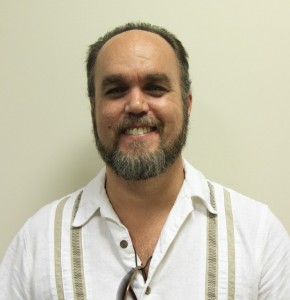 Earlier this week, PBS’s Frontline aired The Interrupters, a documentary by director Steve James. James, best known perhaps for Hoop Dreams, spent a year filming in Chicago. He documented the efforts of Cease Fire, an organization that works to reduce and prevent gang violence in some of the most deadly parts of the city. The film highlights the model developed by Cease Fire. It is an approach to youth violence and crime in general that deserves more attention.
Earlier this week, PBS’s Frontline aired The Interrupters, a documentary by director Steve James. James, best known perhaps for Hoop Dreams, spent a year filming in Chicago. He documented the efforts of Cease Fire, an organization that works to reduce and prevent gang violence in some of the most deadly parts of the city. The film highlights the model developed by Cease Fire. It is an approach to youth violence and crime in general that deserves more attention.
Unlike a lot of other approaches Cease Fire combines elements that are not often utilized together. The first thing that sets this program apart is its staff. Most are former gang members and citizens of the communities they serve. Ameena Matthews is the daughter of Jeff Fort, the founder of the notorious El Rukn street gang. She herself was an enforcer, and is well acquainted with the gang banger’s mindset. The program also takes a “disease model” view of the problem of violence. This model, developed by Dr. Gary Slutkin, uses an epidemiological framework, and is firmly based in disease control methods. It features a three-pronged approach.
The first is identification and detection. Using statistical information and street knowledge workers identify where, when, and with whom to intervene. With a good communications network that incorporates the communities they serve, they can detect where violence is most likely to occur.
The next step includes interruption, intervention and risk reduction. Workers go where the problem is, using their skills in conflict resolution along with their street credibility to get the message to people who are out of reach of the normal system.
“Most of our program participants are beyond the reach of traditional social support systems,” the group’s website says. “They have dropped out of school, exhausted social services or aged out, and many have never held a legitimate job; their next encounter with the system is either to be locked up behind bars or laid out in the emergency room. Our staff gets in where others can’t, meets the participant where they are at, works to change their behavior and connect them to resources that would otherwise be out of reach.”
Lastly, they seek to change “behaviors and norms.” On a personal level they share skills with those at risk, giving them another way to approach situations besides violence. In these communities violence is often seen as an appropriate response. In many cases it has become part of the culture. On a societal scale, Cease Fire seeks to shift the traditional view of violence from a criminal justice perspective, which places prosecution over prevention, to a disease model that views violence as an epidemic and takes appropriate proven methods to reduce its virulence.
This program has proven successful in Chicago. A federal Department of Justice report supports the effectiveness of the program. The report, conducted over a three-year period and involving sophisticated data analysis, showed a 41 – 73 percent drop in shootings and killings in Cease Fire Zones, with a 16 – 35 percent drop directly attributable to their efforts. In five of the eight neighborhoods where they worked there was a 100 percent reduction in retaliatory killings.
The program has been duplicated in Baltimore, New Orleans and other cities in the United States, and in Iraq and South Africa as well. The Global Journal ranked Cease Fire as one of the top 100 non-governmental organizations in the world, and ranked first in violence prevention. This approach deserves more attention and support.
Not only does it reduce crime and keep young people out of jails and morgues, it has the promise of changing the very culture that gives rise to violence.

which report are you referencing?
“A federal Department of Justice report supports the effectiveness of the program.”
Thanks for the question Mr. Butts. The report could more accurately be explained as follows: It was carried out by Professor Wesley G. Skogan of the Institute for Policy Research at Northwestern University, funded by the National Institute of Justice, which is the research arm of the DOJ.Here is the link to the report: http://www.ipr.northwestern.edu/publications/ceasefire.html It is listed on the Cease Fire site as the DOJ report. I hope this is helpful.